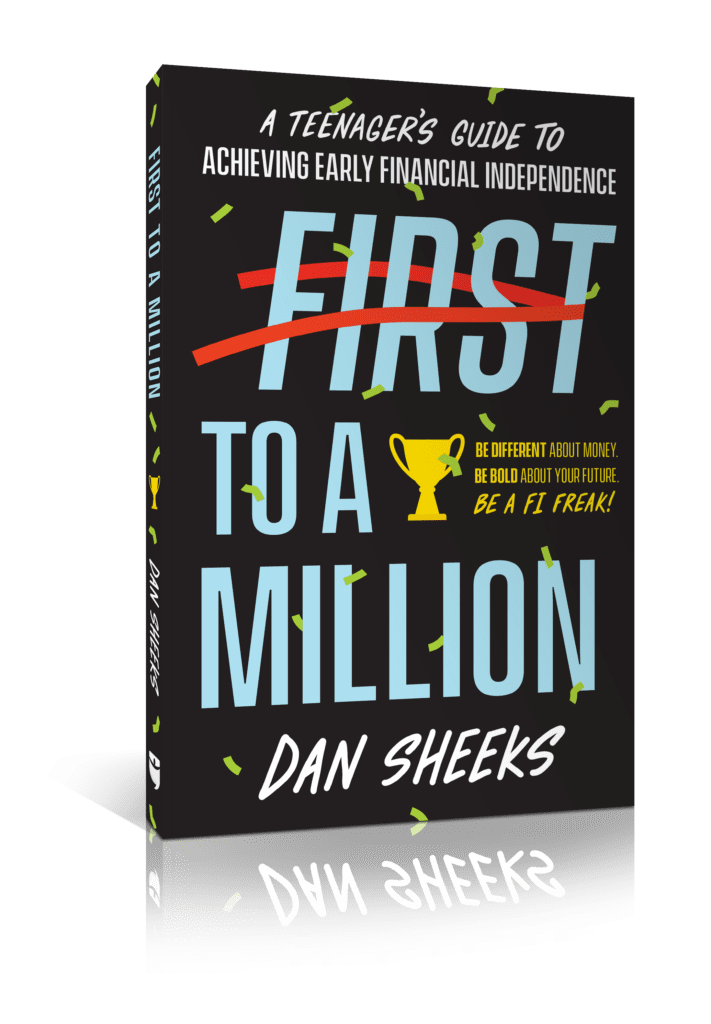We all wish we had started investing in real estate earlier. But when I talk to young people (I’m a high school teacher, so I get to do that daily) about the idea of investing in real estate, the overwhelming initial response is that it’s not something they can do until they’re older.
Wrong, wrong, wrong.
I will talk about the plan I call “REI Before a Mai Tai.” It consists of four steps a young person should follow to set themselves up to buy their first real estate investment property before they can legally purchase and drink a Mai Tai.
It’s not all that complicated. And to be clear, this plan is where the young person does NOT need their parents (or anyone else) to cosign on the mortgage.
I will provide the content below as if we are looking to guide someone who is turning 18 today and wants to buy their first property the day before they turn 21. Therefore, they have a three-year timeline. So if you are a teen, or you know someone who is, here are four steps to enjoying the sweetness of passive income before the sweetness of a Mai Tai.
Enjoy!
Disclaimer: Every lender is different and may vary with regard to the requirements and policies contained in the steps below. But even with those differences, this plan can work for just about any teenager.
How to buy a rental property before you turn 21
Step 1: Get a W-2 job
Of the four steps, this is the one I consistently see cause the most struggle for aspiring young real estate investors. To help find solutions, I’ve interviewed professionals who work in the mortgage industry and asked them what exactly a teenager would need to qualify for a mortgage. As it turns out, satisfying the requirements is not that difficult.
The short answer? They need work history in a W-2 job. This will tell the lender that our applicant has a steady income stream. This is important since lenders need to know that the applicant will be able to make their monthly mortgage payments.
Now please don’t think that I’m suggesting that anyone, especially a young person, get in over their head with a mortgage they can’t realistically pay. I’m just laying out the possibilities so that our teenager can work with the parameters they’re given.
The work history doesn’t have to be as long or as high-paying as one might expect. When the young person is going to apply for the mortgage, just short of 21 years old, they will need to provide paystubs for the previous 30 days that show they are employed and have a steady income. They will likely also need to provide W-2 forms for the last two years.
If the employment in the previous 30 days is full-time work from a well-paying job, then it’s likely the lender won’t need much more. If the history is part-time work, they may need pay stubs going back further in time.
Furthermore, when looking at part-time and full-time work, lenders aren’t as concerned with the number of hours worked per week as they are with the actual amount of income that is coming in. So a consistent, part-time W-2 job that pays well could suffice.
One of the loan professionals I talked to said they want the applicant’s debt to income ratio to be 40 percent or lower. A debt-to-income ratio is calculated by taking all one’s monthly debt payments and dividing it by their gross monthly income.
So to calculate their maximum monthly loan payment allowed by the lender, you would take their gross annual income divided by 12, then multiply by 40 percent.
Before we do an example calculation, let’s assume our 20-year-old is working full-time for around $15/hour. This equates to a gross annual income of roughly $30,000.
$30,000 / 12 x .40 = $1,000
That means that $1,000 per month is the maximum monthly payment that the lender will allow. This $1,000 payment includes PITI, HOA payments, and mortgage insurance if applicable.
Our teen will not have outstanding debt on credit cards, car loans, or anything else that would affect their maximum monthly loan payment. Things like monthly cell phone bills, utility bills, and similar bills do not alter this calculation.
Action to take: At age 18 (or before), get a W-2 job and work consistently up to and beyond purchasing that first property. Not too difficult.
Step 2: Build your credit score
A second important aspect the lender will look at is a credit score and credit history. Sadly, very few young people are educated or mentored on building a solid credit score starting at age 18. But it is very simple to do, especially when starting with a clean slate which most teens have.
After learning the ins and outs of a credit card and how to use and manage one successfully, our teenager should get a credit card at age 18. When they receive that credit card, long-term responsible use is necessary to build and maintain good credit. That includes paying bills on time, carrying a low balance, and paying the balance in full every month.
For our 18-year-old future investor, this will most likely have to be a secured credit card. This is a card where a deposit is made with the credit card company or bank before using the card to make purchases. The good news is that it still helps build up that credit score.
Then, after a year of using that card, the young person will have a budding credit score and credit history and should then apply for an unsecured credit card when they turn 19. By using both credit cards regularly for necessary expenses and paying off the balance every month from 18 to 21 years old, they will have built a credit score that will get them that mortgage.
Another credit card option is a credit card just for students. Here is a list of Nerdwallet’s best college student credit cards for 2022.
One of the interviewed lenders said they look for three tradelines in the credit history. With that being the case, I would not recommend a young person go out and get an auto loan or personal loan just for the sake of having three tradelines.
The best solution I’ve found is for our aspiring investor to get a third credit card around the age of 19 ½.
By using all three credit cards every month AND paying off the entire balance in full before each due date, our young person will be well on their way to having the dazzling credit score by age 21. This will allow them to qualify for that mortgage needed to buy that first property.
Action to take: At age 18, get a secured credit card. At age 19, get an unsecured credit card. At age 19.5, get a retail credit card. Use them all responsibly and consistently while ALWAYS paying off the balance each month.

Change the way you look at money before you turn 20
First to a Million teaches teenagers the many advantages of FI while explaining the secrets of investing, living frugally, and maintaining an entrepreneurial mindset.
Step 3: Save
The next thing our teen will need for their first purchase is cold hard cash for the down payment on the property.
In my opinion (and many others), the best strategy for young people to use in buying their first real estate property is house hacking. So we will assume our young person is looking to buy a property to house hack. It could be a large house for a rent-by-the-room strategy, a fourplex, or something in between.
Since this will be a primary residence, let’s have our young person save 5 percent of the purchase price for the down payment, although it could be less.
As we’ve already established, our young person will be working, at least part-time, to build up the income history needed for the purchase. They will need to save some of that income over the three years.
In addition to their W-2 job, they could employ a side hustle or two to make and save even more.
 A Mother And Teenage Daughter Looking At Laptop Together
A Mother And Teenage Daughter Looking At Laptop Together
Related: How to Make Extra Money (22 Part-Time Gigs & Side Hustle Ideas)
As properties and markets differ significantly, it’s impossible to calculate the exact amount our teen will need to save. But here’s an example just for the sake of having one. We will also include some “buffer” money for initial repairs and maintenance.
- Purchase price: $200,000
- 5% down: $10,000
- Buffer money: $10,000
- Total needed: $20,000
Amount needed to save per month over the three years: $555
Let’s look at how these numbers align with the numbers we used in the debt-to-income ratio from step 1. In that example, our teen was making $30,000 a year, which qualified them to pay $1,000 per month.
If they took out a mortgage of $190,000 with a 4 percent interest rate and a 30-year term, they would have an estimated payment of around $900 per month, not including insurance, taxes, and PMI. Bottom line—this is possible. Mai Tais for all!
Action to take: Get that job. Get a side hustle going. Spend a little. Save a lot.
Step 4: Learn
I would not suggest that anyone, especially our young person, buy a real estate property without first learning about the industry and the appropriate strategies.
From age 18 to 21, our young person should be learning like crazy by doing the following:
Reading books
Reading blogs
Listening to podcasts
Talking to other investors
Finding and following a mentor
Analyzing properties using the BiggerPockets Calculators
Following YouTube channels about real estate investing
While educating themselves, our teenager will likely learn all about how the real estate markets across the country are hot…super hot. And how this means there will be a high level of competitors looking to outbid them on their first purchase. This is where the house hacking strategy helps out again.
Our young person can afford to pay a higher price than the average investor or person bidding on their potential property by renting out the bedrooms in a house or other units in a small multifamily property. The cash flow from their future tenants helps make the higher mortgage payment feasible.
They will also learn that every market and every situation are different. That being the case, the example numbers used in this blog post likely won’t reflect their exact situation. These examples are just to show that it CAN happen.
If their purchase price is higher than the $200,000 used in the calculations above, they would need to increase their average annual income to qualify for a higher mortgage and save more money for the purchase. Both of these are achievable for a motivated teen who wants to begin their real estate investing journey.
Action to take: Learn as much as one can about real estate investing starting now.
And there you have it. The “REI Before a Mai Tai” plan for our teenager to buy their first property before turning 21. Impossible? Not at all.
Probable? Unfortunately, not so much.
It takes a really motivated teenager with help from loved ones to follow this path. But as the BiggerPockets community grows along with the FIRE and “REI for all” movements, it seems there are many of us out there who can help influence and guide some teens to make it happen.
Are there teens you know who should read this article? If so, pass it along. And drink a Mai Tai in front of them to provide just a bit more motivation.

Are there teens you know who should read this article? If so, pass it along. And drink a Mai Tai in front of them to provide just a little more motivation.
Also, leave a comment below!

